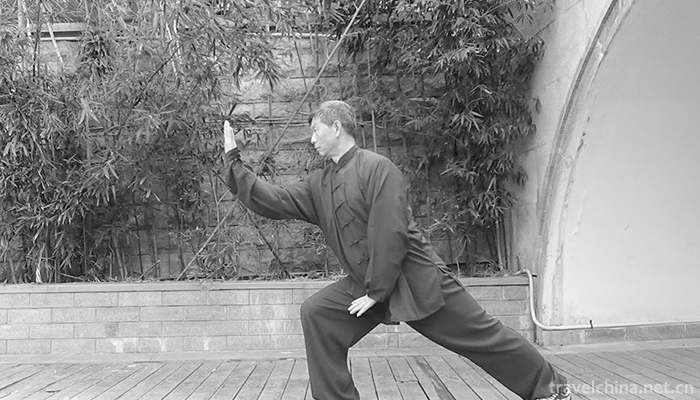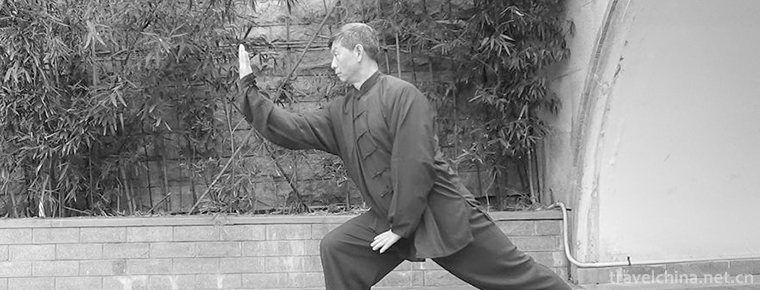Linking Luhe boxing
Linking Luhe boxing
Xinyi Liuhe Quan, also known as Xinyi Quan and Liuhe Quan, is one of the most famous excellent types of boxing in China, which combines fighting, fitness, self-defense and health preservation. It is one of the traditional Chinese boxing, an important part of Chinese martial arts culture and Oriental mysterious culture. From mind to business, and from mind to boxing.
According to legend, Xinyiquan was created by Jijike of Shanxi Province in the late Ming and early Qing Dynasties, and later by Ma Xueli of Henan Province, which has been passed down to the present day. In 2007, it was listed in the first batch of provincial intangible cultural heritage.
On June 7, 2008, Xinyi Liuhe Quan was listed in the second batch of national intangible cultural heritage list with the approval of the State Council.
brief introduction
Xinyi Liuhequan is also known as the technique of guarding holes and dust. As the name implies, this boxing is also called Xinyiquan because it is from mind business and from mind to mind.
Xinyiquan is legendary created by Ji Jike, a martial artist in the late Ming and early Qing Dynasties. Since the foreigners came to the Central Plains, there was a strong anti-Qing thought at that time. Later, after arriving at the Shaolin Temple in Henan Province, they stayed there to teach because of their excellent martial arts. During their stay, they studied deeply the Five Elements Quan which was prevalent in Shaolin in the Ming Dynasty. Then one day, when the two chickens were fighting, they realized their reason and created a six-in-one relationship. Later, Xinyi Liuhequan has been a major branch of Henan Xinyi Liuhequan for hundreds of years since it was passed down from Luoyang personage Ma Xueli.
When practicing mind boxing, there are requirements of "outside three-in-one" and "inside three-in-one". The so-called "three-in-one" refers to "shoulder and crotch, elbow and knee, hand and foot", that is, all parts of the body should cooperate with each other in the exercise of boxing; while the "three-in-one" refers to "mind and agreement, will and Qi, Qi and strength", that is to say, it is the combination of inner mood and punch, strength and so on, that the power can be exerted. The exercise route of Xinyiquan is mainly straight forward and backward, and the footwork is steady and solid. The ten shapes of Xinyiquan imitate the actions of dragon, tiger, horse, monkey, chicken, kite, swallow, snake, bear and eagle in attacking, crossing, hunting and dodging. They have obvious offensive and defensive consciousness. Each shape has its own unique meaning. In terms of recruiting style, they are mostly single-form, while the routine only has four beats and one set, and there are also two and a half created by later generations, and so on. PS: Six-in-one also refers to the combination of chicken leg, eagle-catching, dragon body, bear's arm, tiger's embracing head and thunder.
Zhoukou Xinyi Liuhe Quan has developed rapidly, spreading not only to Beijing, Shanghai, Anhui, Hubei, Hong Kong, Taiwan and other places, but also to the United States, Australia, Canada, South Korea, New Zealand and other countries and regions


-
1.century eggspreserved egg100years egg
Preserved egg, also known as preserved egg, egg, egg, egg, etc
Time 2018-10-12 -
2.Global Dinosaur City Scenic Spot
The National 5A Tourist Scenic Spot Global Dinosaur City, located in Xinbei District, Changzhou, Jiangsu Province, is a comprehensive tourism resort with dinosaur theme
Time 2018-12-06 -
3.The Badaling Great Wall
Juyongguan Great Wall is a famous ancient city along the Great Wall of Beijing and a national cultural relic protection unit. It is a national AAAA scenic spot assessed by Beijing Tourism Bureau
Time 2018-12-09 -
4.Qiqu Mountain Scenic Area
Qiqu Mountain Scenic Spot is located about 9 kilometers north of Zitong County, Mianyang City, Sichuan Province. It is located at the southern end of Jianmen Shudao Scenic Spot.
Time 2018-12-17 -
5.China Coal Museum
The China Coal Museum is located at the intersection of Yingze Street and Jinci Road in Taiyuan City. It was completed and opened on September 30, 1989
Time 2018-12-22 -
6.Narati Scenic Spot
Narati Tourist Scenic Area, located in Xinyuan County, Xinjiang, is located in the hinterland of Tianshan Mountains, the eastern end of the Ili Valley, with a total planning area of 960 square kilomet
Time 2019-02-07 -
7.Yuanshan National Forest Park
Yuanshan National Forest Park is located in the southwest of Boshan District, Zibo City, Shandong Province. It was established in 1992 with the approval of the Ministry of Forestry.
Time 2019-03-09 -
8.Bo Ba Shen en
Bobassengen is a unique folk large-scale narrative mass pot village dance created by Ganbao Tibetan Village in Jiarong Tibetan area, Lixian County, Sichuan Province. "Boba"
Time 2019-04-04 -
9.Definite day harmonics
Dingriluo Harmony Dingriluo Harmony, the second batch of national intangible cultural heritage list of the People's Republic of China. It is the main form of folk singing and dancing in Dingri County
Time 2019-04-27 -
10.Salar Wedding
Salar wedding ceremony is one of the most important ceremonial activities in Salar people's life etiquette. Salar traditional wedding ceremony is held in the midwinter of each year. From engagement to
Time 2019-06-11 -
11.Siping Tune
The Siping tune evolved from the flower drum in eastern Henan. After digging and sorting out, it absorbed the tunes of opera critics, Peking Opera, Henan Opera and so on. It gradually perfected and fo
Time 2019-06-16 -
12.Chuanxindian earthquake site
Compared with Beichuan earthquake site, Yingxiu earthquake site and Hanwang town earthquake site, chuanxindian earthquake site in Shifang has unique advantages. It can fully reflect the great spirit of earthquake relief and has great protection and construction value.
Time 2020-11-05